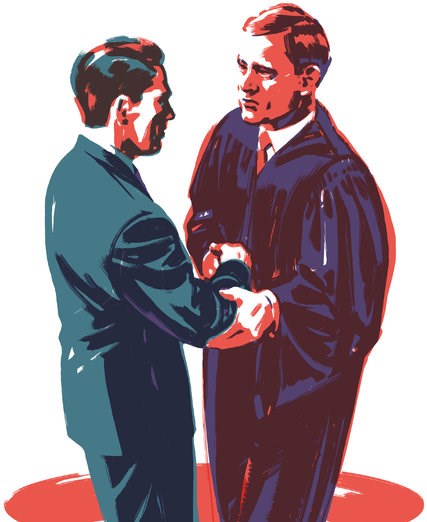
Even in the face of a police raid, but subject to a court order that communications be disclosed, communications between a client and his or her lawyer are confidential.
There are previous blogs on the topic of lawyer client privilege.
Here is a summary of the law relating to such a confidentiality “privilege” in the course of litigation as set out in the decision Leslie V. S&B Apartment Holdings Ltd 2009 NSSC 57:
(14) The legal test for the determination of a claim for litigation privilege was recently solidified once and for all by the Supreme Court of Canada in Blank v. Canada (Minister of Justice), 2006 SCC 39 (CanLII), [2006] 2 S.C.R. 319. In that decision, the dominant purpose test was affirmed as being the standard most consistent with the notion that litigation privilege should be viewed as a limited exception to the principle of full disclosure and not as an equal partner of the broadly interpreted solicitor-client privilege. The dominant purpose test was said to be more compatible with the contemporary trend favouring increased disclosure.
[14]The dominant purpose test emanates from the decision of the House of Lords in Waugh v. British Railways Board , [1979] 2 All E.R. 1169 where it was set out as follows (at page 1183):
A document which was produced or brought into existence either with the dominant purpose of its author, or of the person or authority under whose direction, whether particular or general, it was produced or brought into existence, of using it or its contents in order to obtain legal advice or to conduct or aid in the conduct of litigation, at the time of its production in reasonable prospect, should be privileged and excluded from inspection.
[15]It should also be observed that the dominant purpose test was adopted and applied by the Nova Scotia Court of Appeal in several decisions along the way, the earliest of which was Davies v. Harrington [1980] N.S.J. No. 411 and the most recent of which appears to be Mitsui & Co. (Point Aconi) Ltd. v. Jones Power Co. [2000] N.S.J. No. 258.
[16]The dominant purpose test is discussed at length in the well-known text Solicitor-client Privilege in Canadian Law written by Manes & Silver in 1993. At page 93, the authors identify the following three elements of the test, each one of which must be met:
(1) The document must have been produced with contemplated litigation in mind;
(2) The document must have been produced for the dominant purpose of receiving legal advice or as an aid to the conduct of litigation (i.e., for the dominant purpose of contemplated litigation);
(3) The prospect of litigation must be reasonable, meaning that there is a reasonable contemplation of litigation.
[17]As for the last requirement, the authors note that there must be more than a vague or general apprehension of litigation. Indeed, as Justice Davison put it in Ford Motor Co. of Canada v. Laconia Holdings Limited reflex, (1991), 108 N.S.R. (2d) 416 (at para 9), “there must be a definite prospect of litigation before it can be said that litigation was contemplated”.
[18]It is unnecessary for purposes of this decision to delve into the distinguishing features between litigation privilege and legal advice privilege as the two branches of solicitor-client privilege. The manner in which those two branches of solicitor-client privilege are driven by different policy considerations and generate different legal consequences was thoroughly reviewed in the recent decision of the Supreme Court of Canada in Blank where such was in issue. In the present case, we are only dealing with the issue of litigation privilege whose purpose, to adopt the words of Justice Fish in Blank, is “to create a zone of privacy in relation to pending or apprehended litigation”.
[19]As expressed in the aforesaid text by Manes and Silver (at page 89), the rationale for extending the protection of privilege to documents internally generated or commissioned by the client is that they derive from the solicitor-client relationship. If such communications are made in contemplation of litigation, the law then treats the communication as if it were made directly between solicitor and client.
[20]This does not mean, of course, that a solicitor must first be retained, even for general legal advice, before a claim of litigation privilege can be asserted. On the contrary, litigation privilege arises and operates even in the absence of a solicitor-client relationship (see Blank at para 32). In order for the claim of litigation privilege to succeed, however, the information independently acquired by the client must have been prepared or so acquired for the dominant purpose of contemplated litigation.
[21]Although this legal test is now well settled and clearly articulated, it can nonetheless be problematic in its application, particularly in cases where documents prepared or acquired by insurance adjusters are involved. As Justice Davison observed in Ford Motor Co. (at para 9):
The most difficult cases in which to ascertain that point where policy demands otherwise relevant evidence should not be produced on grounds of privilege involve insurance adjusters’ files. The duties of an adjuster are complex. Invariably, he gathers information for many purposes. When there has been a casualty, information is necessary to determine the cause of the loss with a view to ascertaining if the policy provides cover. Information is required to determine if any conditions of the policy have been breached. Information is required to determine the size or quantum of the loss. Information is required to determine whether the assured or others are at fault for the loss. Adjusters seek information, prepare reports and assess the information in order to make recommendations to their principals. In all of these roles, there can be situations which arise at some point where litigation becomes a definite prospect in order to assert a subrogation claim, defend a liability claim or maintain a denial to the insured. The court must examine the whole background and be alert not to be misled by transparent attempts to protect the documents from disclosure by using lawyers as conduits only, or even by well-meaning but generalized statements that litigation was “probable”.
[22]In cases of this sort , and indeed for any claim of litigation privilege, it is important to remember that each case must be analyzed on its own facts and requires an inquiry to be made into the purpose(s) for which the document was prepared or acquired. It is also well-established that the burden is on the party asserting the claim of privilege to show that the dominant purpose for the preparation or acquisition of the document in question was for receiving legal advice or as an aid to the conduct of litigation (see, for example, Ford Motor Co. and Metlege v. Halifax Insurance Co. [1998] N.S.J. No. 309 (N.S.C.A.).




